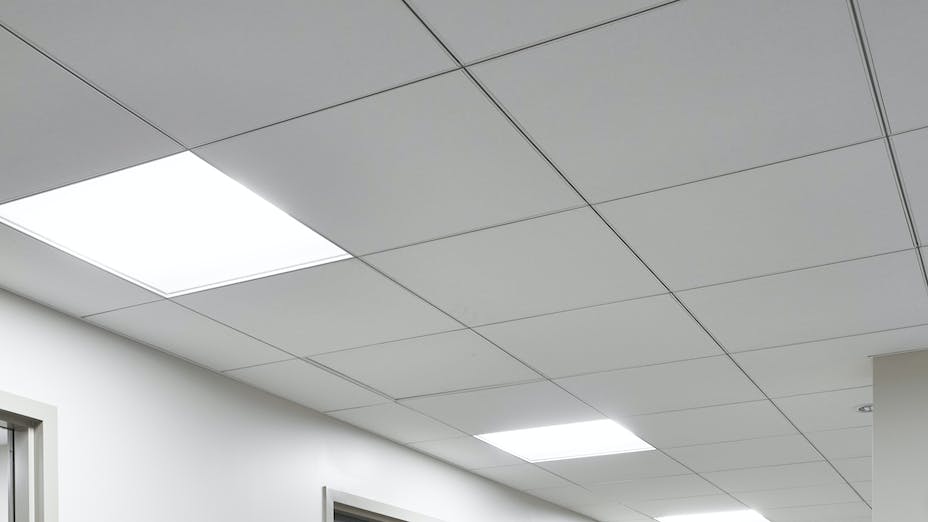Installation of ceiling lighting and power
HomeInstallation of ceiling lighti...
Advantages of investing in and replacing old lighting schemes with LED technology in both commercial and residential settings
In recent years, there has been a significant shift towards energy-efficient lighting solutions, with LED (Light Emitting Diode) lights emerging as the preferred choice for commercial settings. LED lights offer numerous advantages over traditional lighting options such as halide, fluorescent, halogen, and incandescent lights. This article explores the benefits of replacing old lighting systems with LED lights in commercial environments.
1. Energy Efficiency
One of the most significant advantages of LED lights is their exceptional energy efficiency. LED lights consume significantly less energy compared to traditional lighting options. They convert almost all the energy they consume into light, with minimal energy wasted as heat. This efficiency translates into substantial energy savings, resulting in lower electricity bills which can translate into large savings in commercial establishments in times of rapidly rising costs.
2. Cost Savings
LED lights may have a higher upfront cost compared to traditional lighting options, but their long-term cost savings make them a worthwhile investment. Due to their energy efficiency, LED lights consume up to 80% less energy than incandescent bulbs and last up to 25 times longer. This extended lifespan reduces maintenance and replacement costs, making LED lights a cost-effective choice for individuals, but especially in commercial settings.
3. Improved Lighting Quality
LED lights provide superior lighting quality compared to older lighting technologies. They offer a more consistent and uniform distribution of light, reducing shadows and dark spots. LED lights also have a high color rendering index (CRI), which means they accurately represent colors, making them ideal for commercial spaces where accurate color perception is crucial, such as retail stores and art galleries.
4. Durability and Longevity
LED lights are highly durable and built to withstand harsh conditions. Unlike traditional lighting options, LED lights are not made of fragile materials like glass, making them resistant to breakage. They are also less prone to damage from vibrations and shocks, making them suitable for commercial environments with high foot traffic or industrial settings.
Additionally, LED lights have an impressive lifespan, lasting up to 50,000 hours or more, depending on the model. This longevity reduces the frequency of replacements, minimizing maintenance costs and disruptions to business operations.
5. Environmental Benefits
LED lights are an environmentally friendly lighting solution. They do not contain hazardous substances like mercury, which is present in fluorescent lights, making them easier to dispose of and reducing the risk of environmental contamination. Furthermore, LED lights contribute to reducing carbon emissions due to their energy efficiency, helping businesses and individuals meet their sustainability goals and reduce their ecological footprint.
6. Flexibility and Design Options
LED lights offer a wide range of design options, allowing businesses and individuals to customize their lighting to suit their specific needs. LED lights come in various shapes, sizes, and colors, making them versatile for different commercial settings. They can be easily integrated into existing lighting fixtures or used to create innovative lighting designs, enhancing the aesthetic appeal of commercial and personal spaces.
Conclusions
The advantages of replacing old lighting systems with LED lights in commercial settings are undeniable. From energy efficiency and cost savings to improved lighting quality and environmental benefits, LED lights offer a compelling solution for businesses or individuals seeking to enhance their lighting infrastructure. With their durability, longevity, and design flexibility, LED lights are a smart investment that can positively impact both the bottom line and the environment. Embracing LED technology is a step towards a brighter, more sustainable future for both commercial and domestic lighting.
Commercial lighting indicates the light fixtures used in various properties such as offices, hospitals, supermarkets, and other non-residential properties. These fixtures are chosen based on their look and design as well as on the needs of the building occupants. Commercial lighting plans are developed by interior designers or architects, in collaboration with various electrical engineers.
Fluorescent Lights
Tubular fluorescent lights are common types of installations in commercial settings. They are attached to suspended ceilings and covered with a textured or frosted lens. Based on the amount of light needed in the building, fluorescent lights may contain from one to four bulbs. They are one of the most long-lasting and energy-efficient options available to commercial users.
Metal Halides
Metal halides are commonly found in industrial applications or warehouses. They are also known as high-intensity discharge (HID) lighting. They typically consist of a pendant ceiling with lenses and bulbs of varying sizes. These lights produce bright light in large quantities and they can illuminate large spaces. While high-pressure halide lights are almost inefficient, there are low-pressure sodium versions which are comparable to fluorescent lights when it comes to energy consumption.
Incandescent
Incandescent lighting is considered one of the oldest forms of lighting technology. They are used in desk lamps, recessed downlights, and other fixtures. Bulbs built using this technology are very inefficient and have a short lifespan. Since these bulbs have wide availability and low upfront costs, they are frequently used in commercial settings. Incandescent bulbs also produce light that is very similar in brightness and colour to natural sunlight, making them popular with consumers.
Halogen
Halogen lamps are frequently used in various outdoor commercial applications. They are commonly used for flood or security lights, and also in stadiums and sports arenas. They produce a very white, bright light, and are twice as efficient as incandescent bulbs. There are smaller halogen bulbs that are also used as display lighting or spotlights in retail stores.
Compact Fluorescent
Compact fluorescent lighting uses traditional fluorescent technology, but it relies on a shorter internal ballast which allows the users to install the bulbs in different fixtures. They produce almost the same energy efficiency as tubular fluorescent fixtures, but usually, more white, natural lighting is produced. Compact fluorescent lights are frequently used to replace incandescent bulbs in lamps, downlights, and other task lighting applications.
Granmore, experts in commercial lighting, have a showroom in Manchester that stocks a wide variety of commercial lighting. We also provide a professional supply and installation service that can be combined with our suspended ceiling range for a complete ceiling and lighting solution. Our selection of commercial lighting and office includes modular, fluorescent, recessed, downlighters, and surface-mounted fittings. We can advise you on your lighting requirements for different environments, from small offices to large commercial projects, and health and education establishments.
Granmore is one of the Northwest’s leading commercial lighting suppliers. We do not stock domestic lights, but we can source lighting products, negotiate the best price, and purchase on your behalf. Please contact us for a competitive quote for all your lighting needs at 0800 074 6006 or email: enquiries@granmore.com.

 Cart is empty
Cart is empty 





